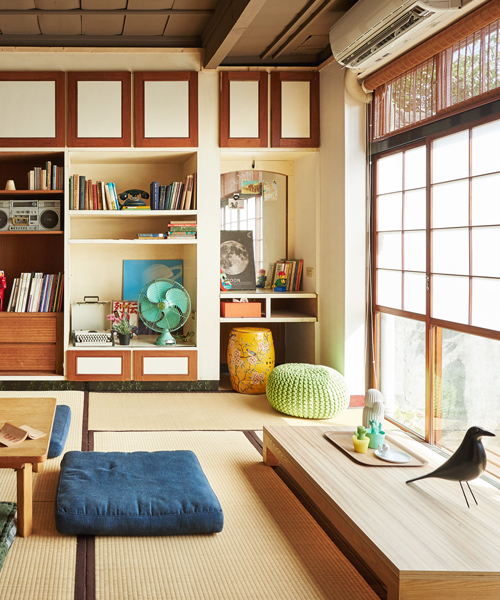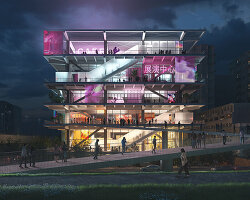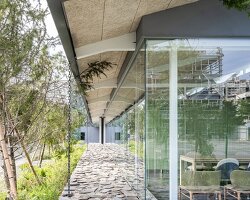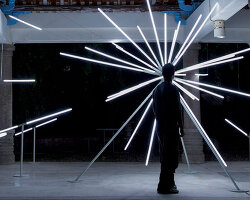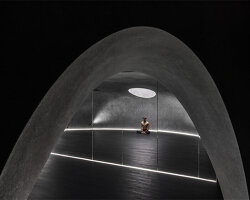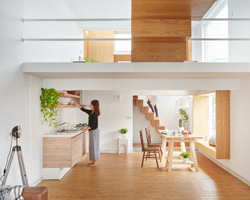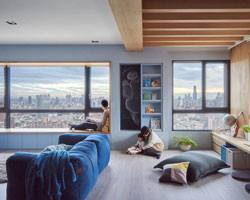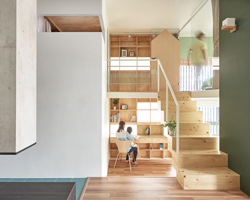HAO design transforms historic dwelling in taiwan into an experimental living studio
all images by hey!cheese
this residential renovation in taiwan occupies a building originally built by the japanese army during world war II. as part of huangpu village, taiwan’s first military settlement, the neighborhood quickly fell into disrepair after japan was defeated. rather than being demolished, the village was subsequently listed as a protected cultural landmark. in 2015, citizens were encouraged to apply for temporary residence within the neighborhood.
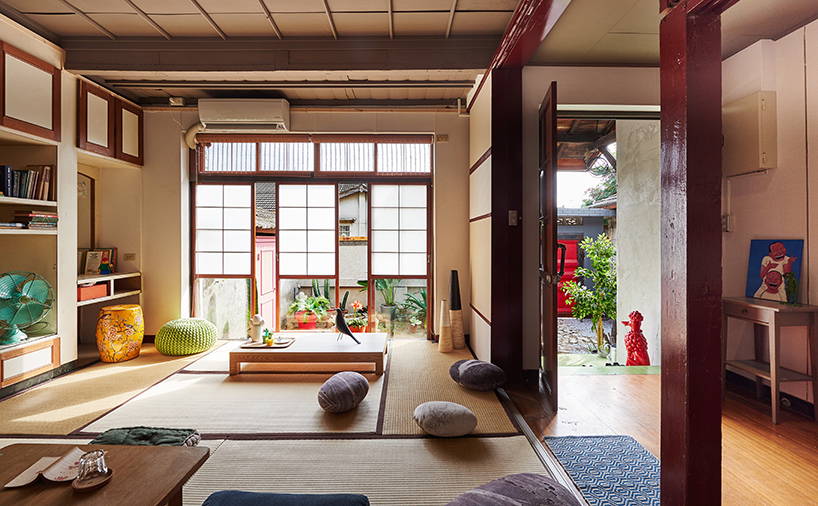
a wooden sliding window that faces the garden has been remade from solid wood
HAO design was asked to restore one of the site’s dwellings — retaining the original structure and keeping the historical context. conceived as an experimental living studio, the property has been designed to host workshops, lectures, and hands-on cement work. the scheme also provides an art residency, allowing members of the renovation project to practice their interior design skills.
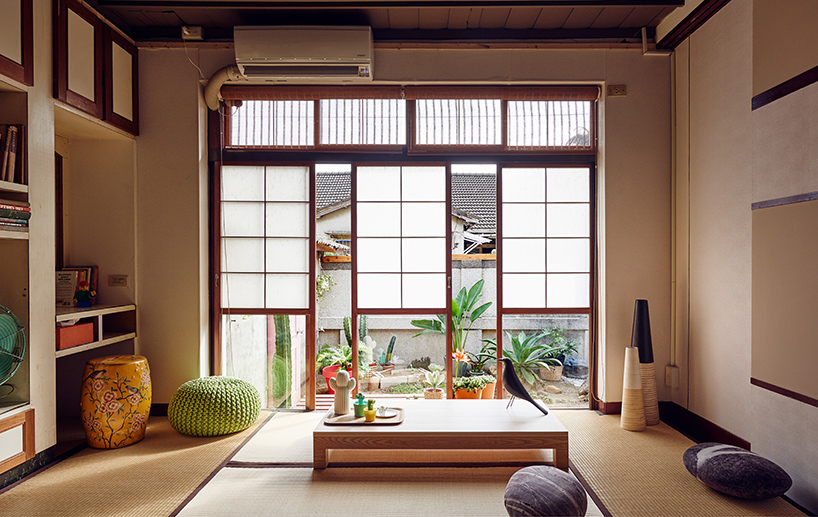
the structure of the ceiling was also preserved, but painted to echo the room’s timber tones
‘although renovating an old house was an exciting task, the house when we took over was falling apart,’ explains HAO design. ‘there was no water or electricity.’ considering the historical significance of this building and its special cultural value, the design team sought to create a space that wasn’t in conflict with the existing architecture.
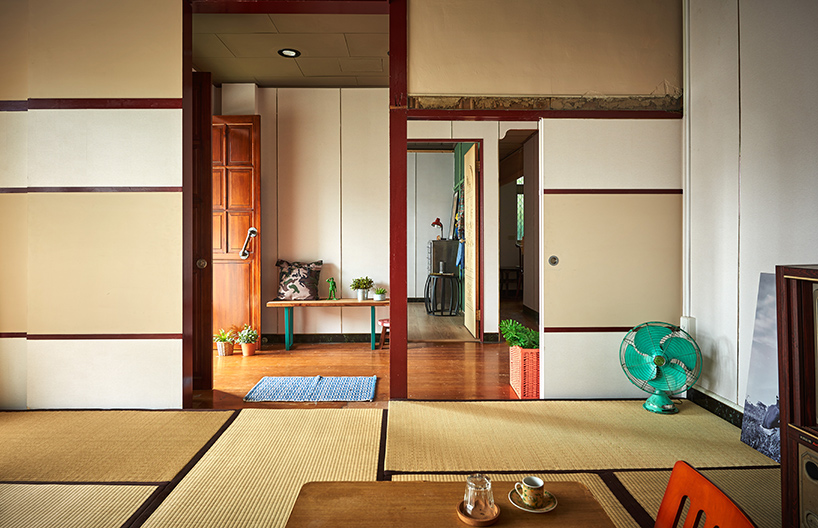
a japanese-style room serves as the property’s main space
for instance, the roof tiles were characteristic of a japanese building, however leaks were a serious problem. the team applied a waterproof coating before restoring the tiles. ‘the red gate symbolic of a military village had already been replaced by a modern aluminum gate, so we decided to introduce the industrial feature of kaohsiung by presenting a red freight container gate which reflects the culture and landscape of kaohsiung city,’ adds HAO.
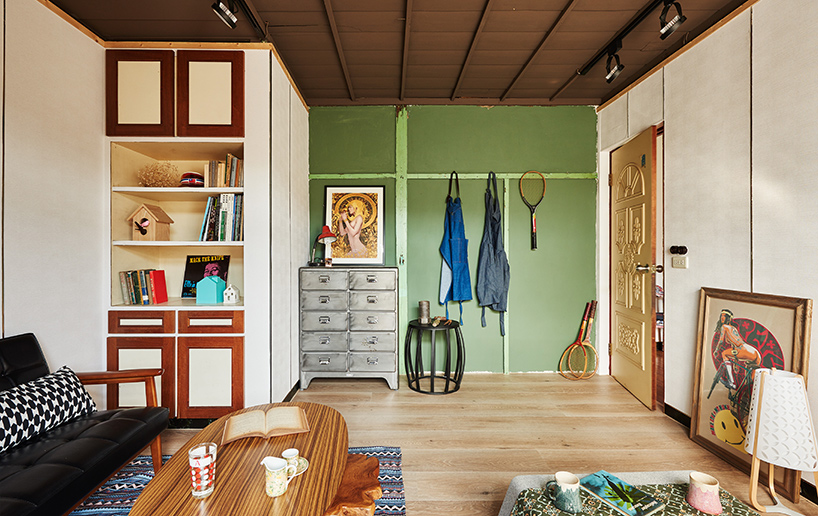
the scheme has been conceived as an experimental living studio
upon entering ‘J.Y. studio’ one enters an enclosed courtyard that connects to each area of the plan. the patio contains tropical plants suitable for the climate of southern taiwan: succulents, japanese ivy, small cacti, agaves and crane flowers have all been planted. the courtyard also incorporates elements of playfulness — a bright pink door and a large lego-style table.
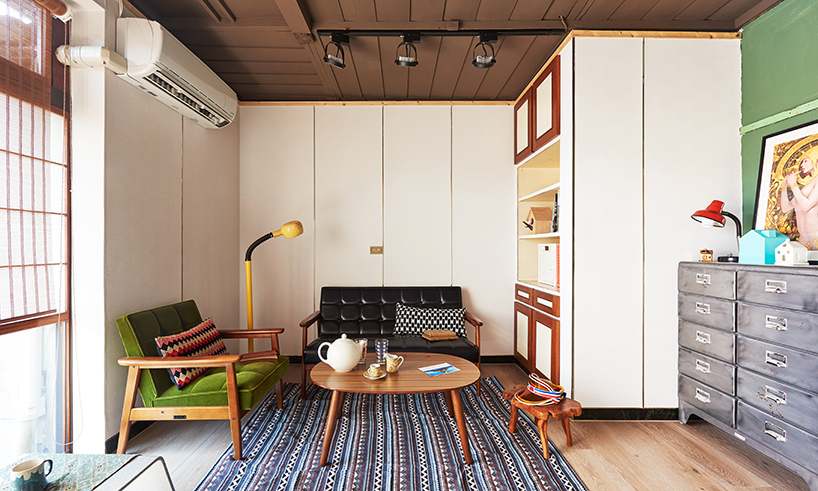
the design retains the original structure and its historical context
internally, many of the original elements have been retained. a japanese-style room forms the property’s main space, hosting a preserved wardrobe that has been turned into a functional wall cabinet. the structure of the ceiling was also preserved, but painted in cocoa to echo the room’s timber tones. a wooden sliding aperture that faces the garden has been remade from solid wood, while the lower part of the window was replaced with glass — allowing natural light and views.
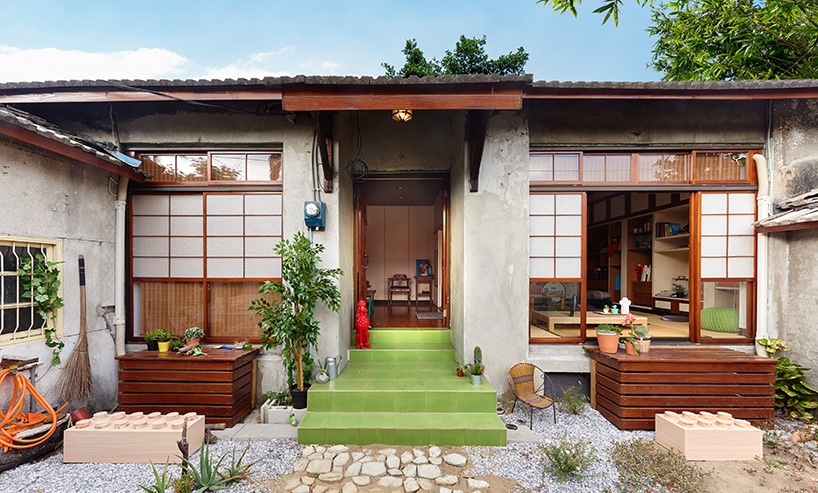
an enclosed courtyard connects to each area of the plan
an adjacent room retains its original ceiling, terrazzo flooring and brown walls. ‘we arranged track lighting here and set it out as an exhibition space,’ says HAO. ‘we decorated the space with taiwanese armchairs produced in the 50s using R-shaped wooden tenons; a classical japanese karimoku sofa popular in the 60s; taiwanese trumpet stools reminiscent of pop art from the 70s; and a yellow floor lamp symbolic of the space age.’
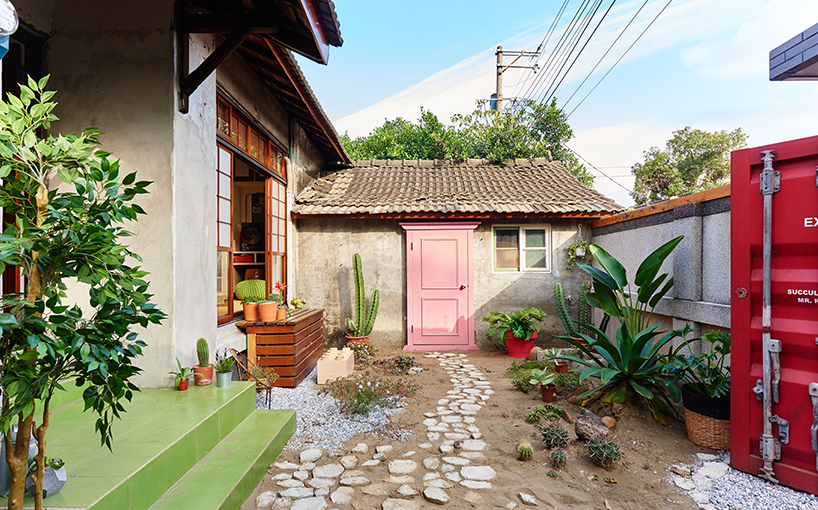
the courtyard incorporates elements of playfulness — a bright pink door and a lego-style table
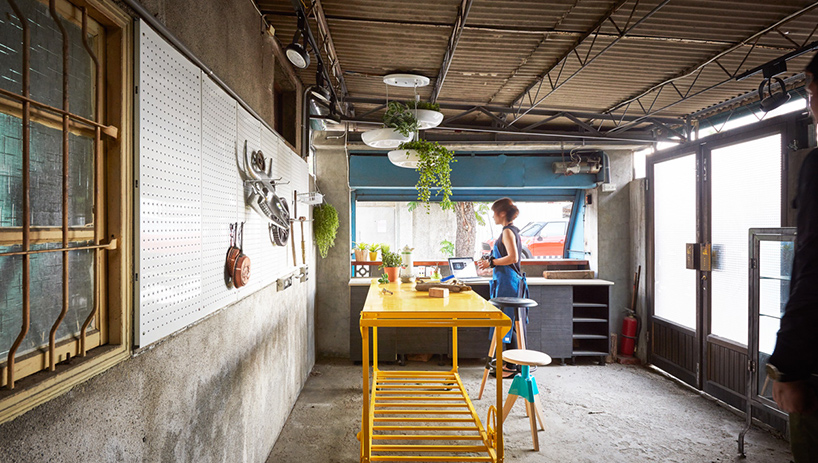
a workshop provides space for hands-on production

bright pieces of furniture contrast the dwelling’s original materials
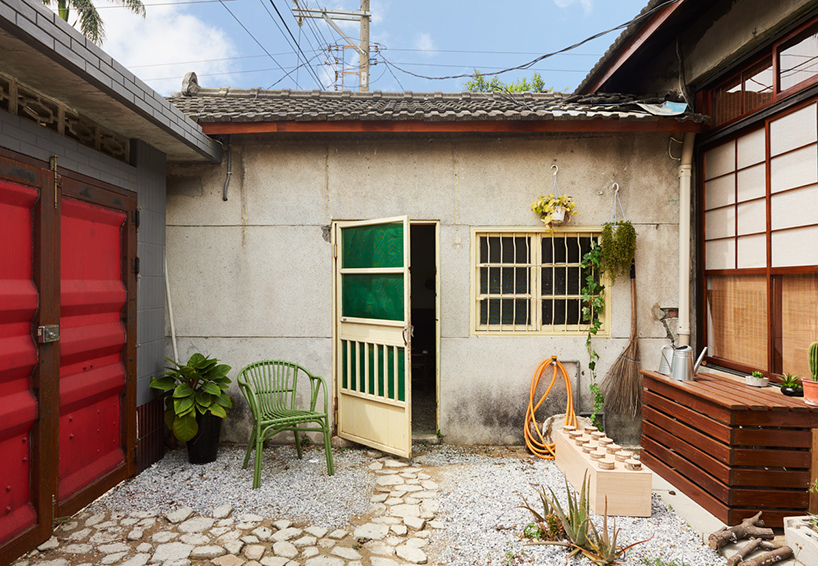
the patio contains tropical plants suitable for the climate of southern taiwan
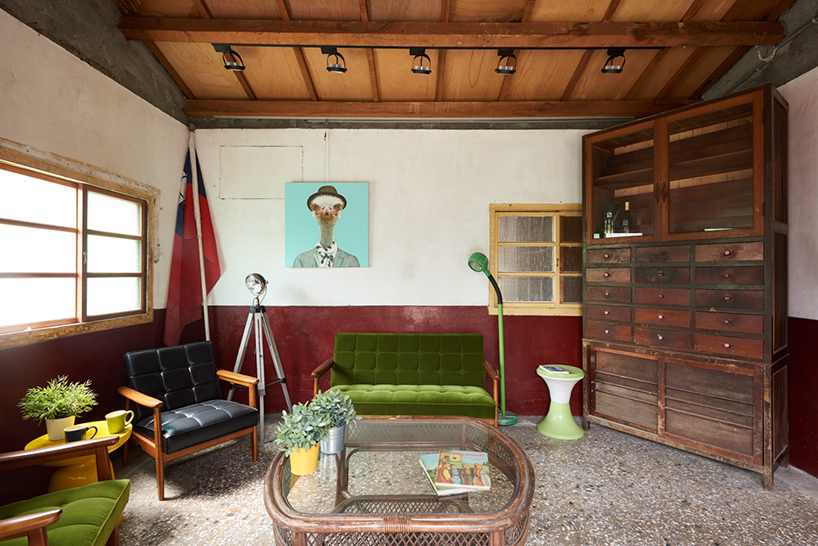
an adjacent room retains its original ceiling and terrazzo flooring

the interior includes taiwanese armchairs produced in the 1950s
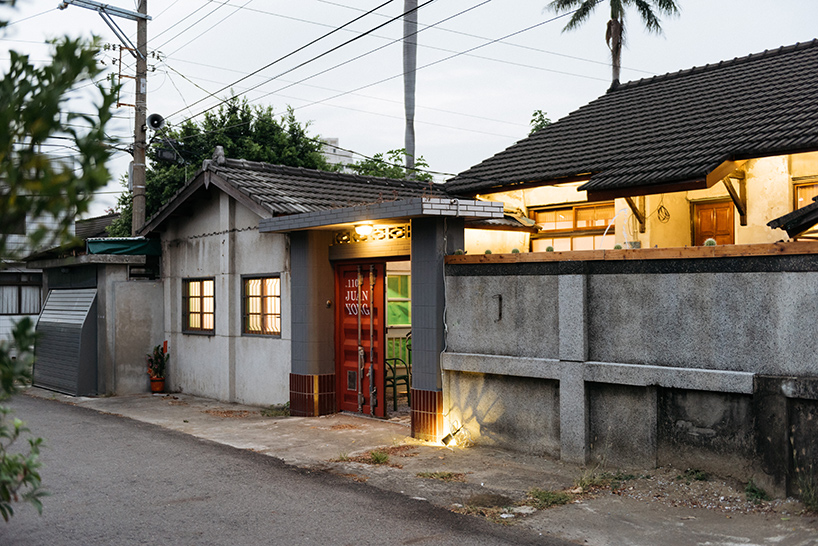
the studio viewed from the passing street
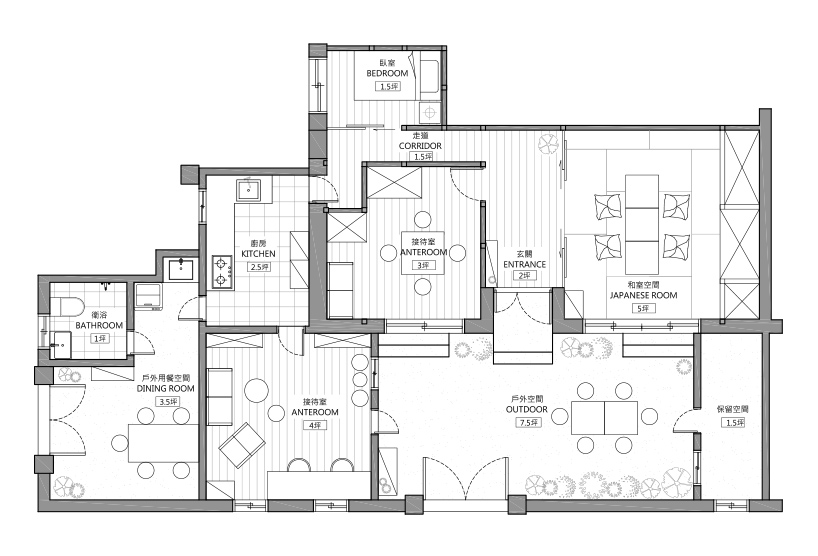
floor plan












project info:
interior design: HAO design
location: kaohsiung city, taiwan
area: 137 sqm
completed: 2015
type: residential
photography: hey!cheese
